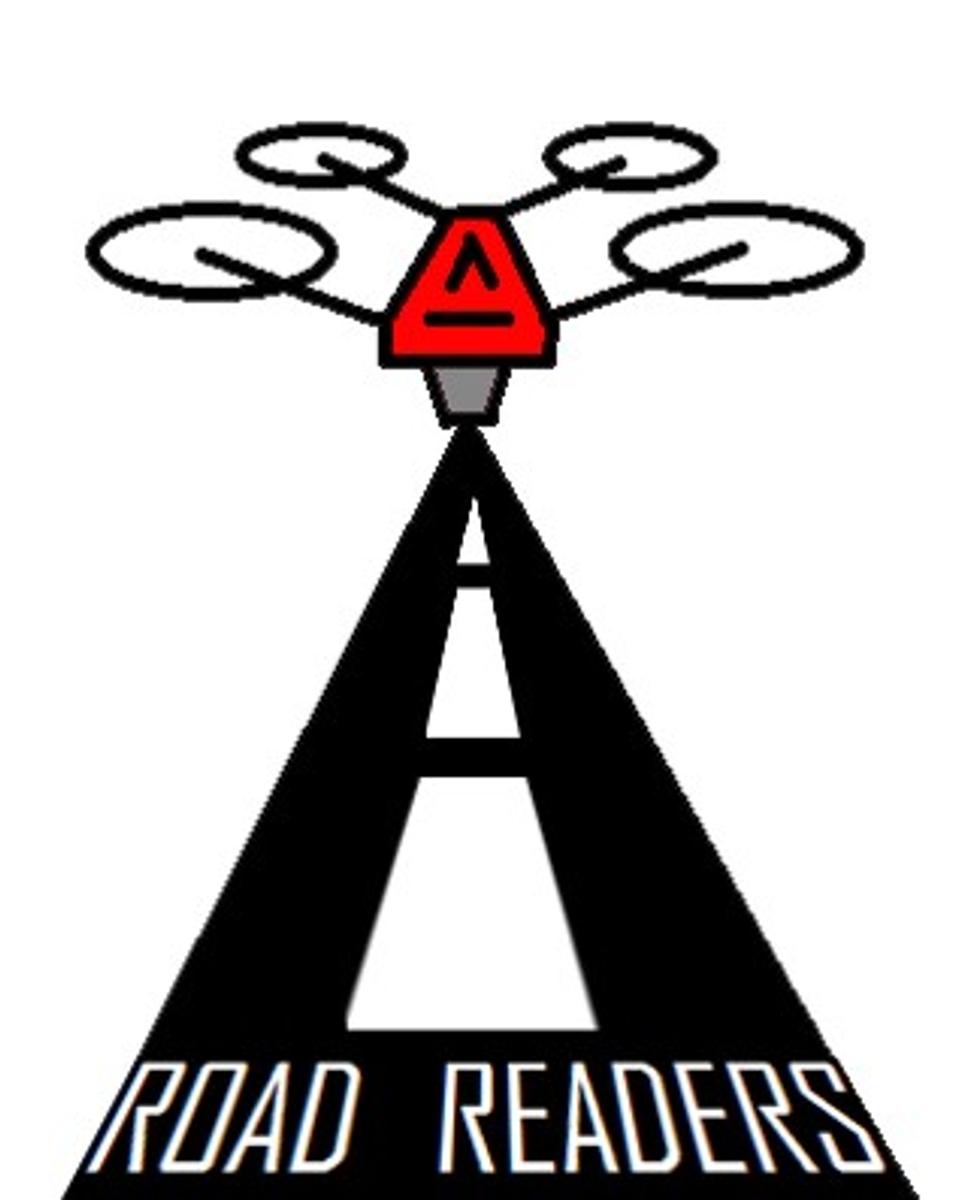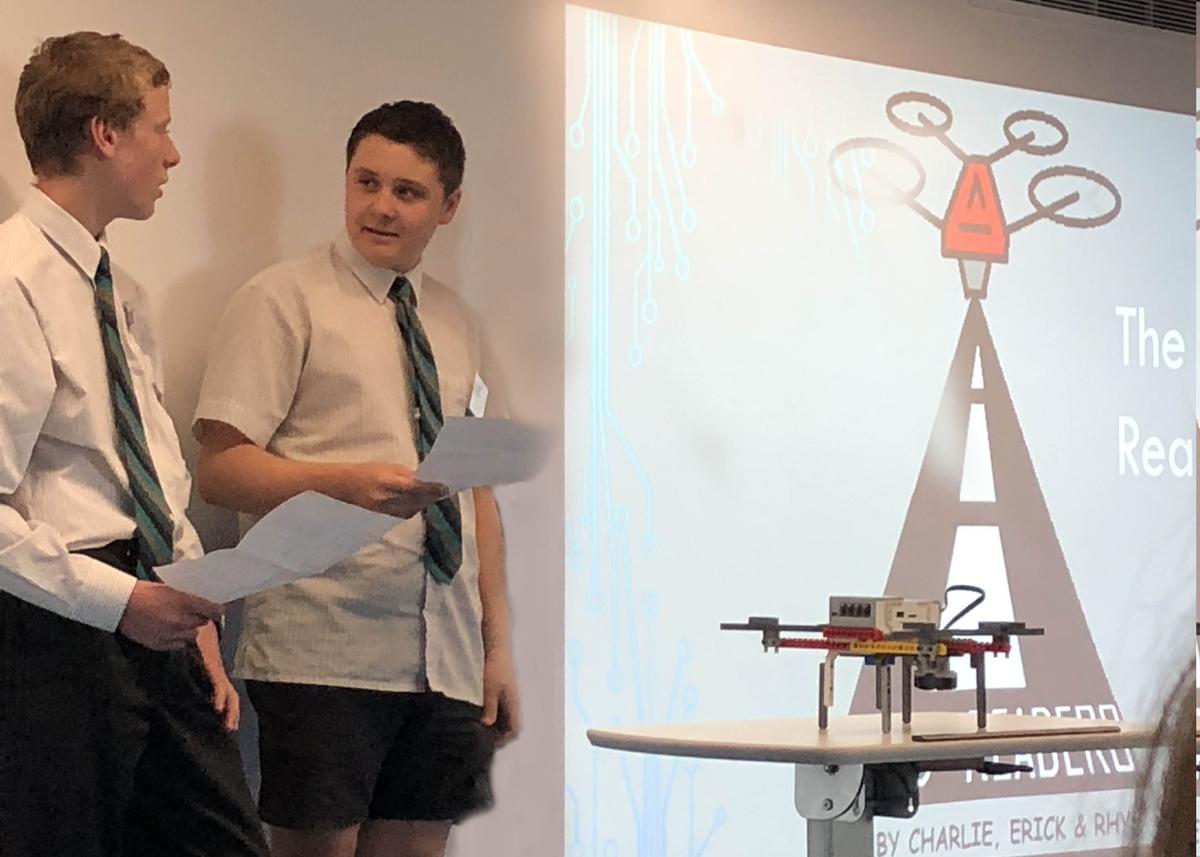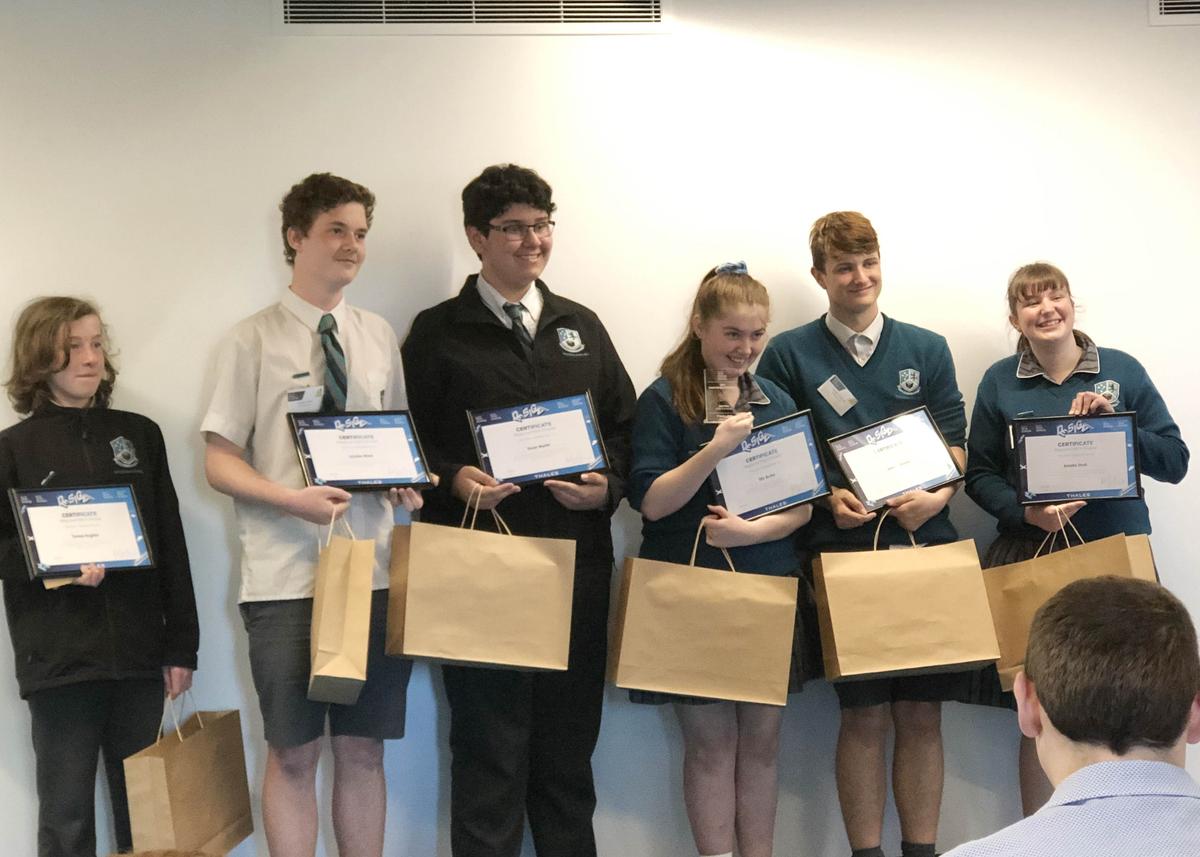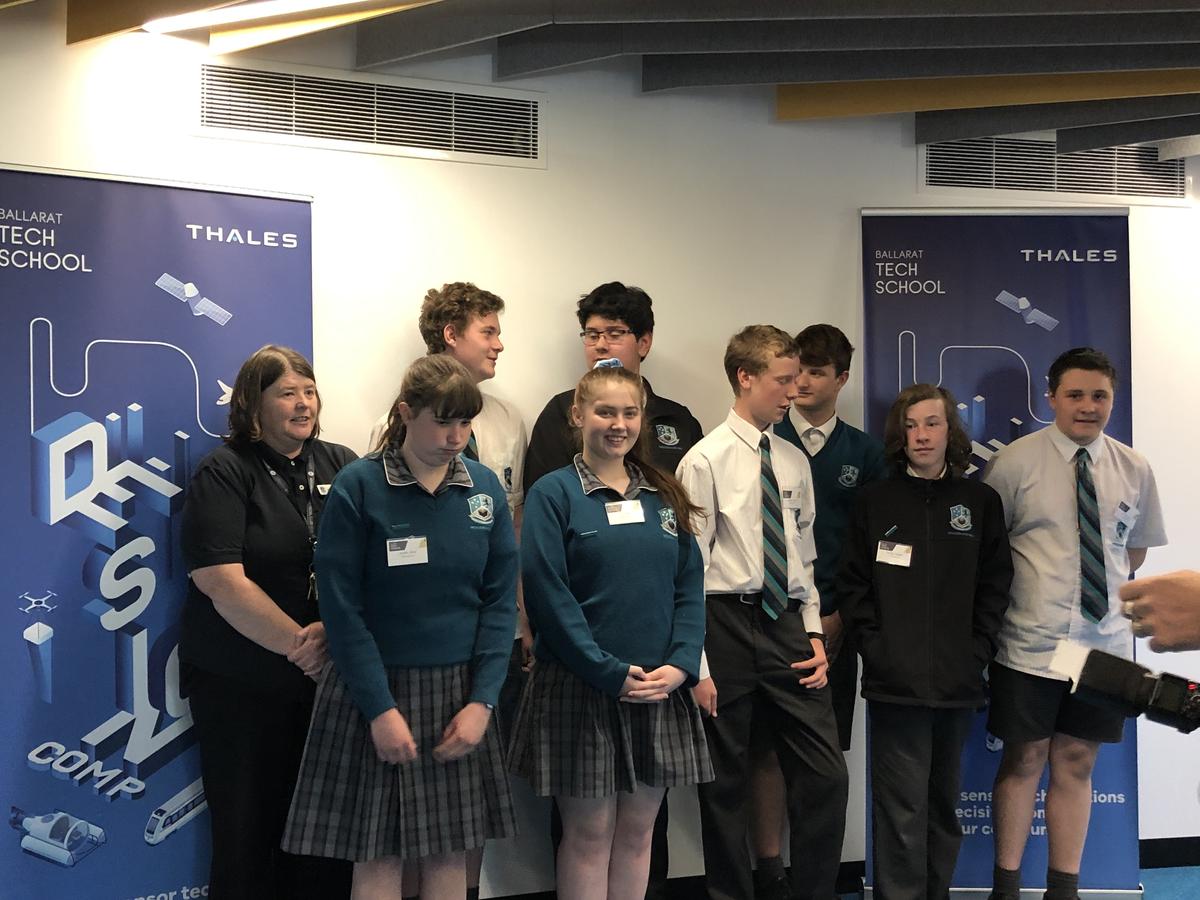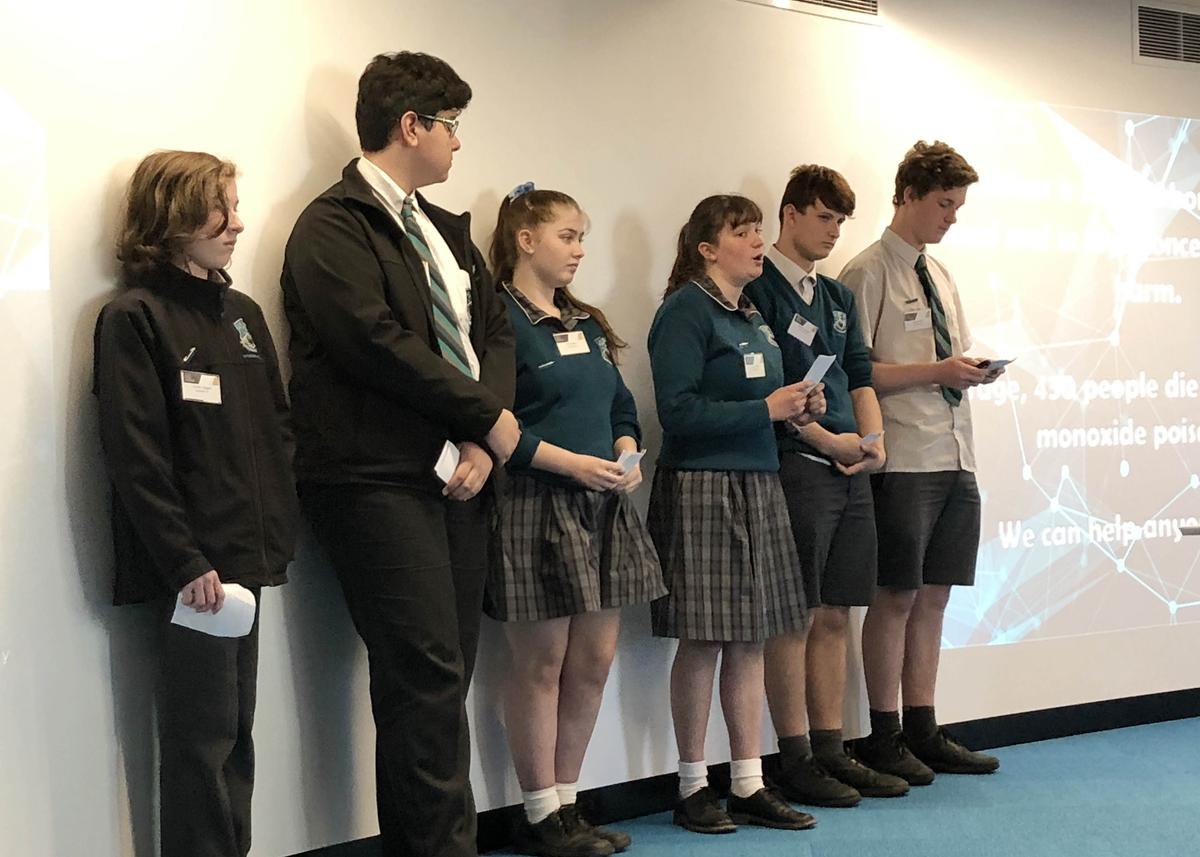Thales Competition

THE BRIEF: This competition asked the entrants to create a prototype which, by using sensor technology, would help benefit the community.
Groups 1 & 2 Year 10 Students experiences during the Project:
GROUP 1 - 3 STUDENT RESPONSES
Student 1: On Monday 28th October our team (The Road Readers) Charlie Farrell, Rhys Miss Collins and myself, went to the Ballarat Tech School to compete in the ‘Thales Regional Competition Pitch’. We were competing against three other teams; One of the other teams was from our school, Woodman’s Hill Secondary and the other two teams were from Phoenix.
Charlie, Rhys and I presented first, the presentation went really well. After the presentation, we answered some questions and sat back down to listen to the rest of the presentations.
The judges announced, the two teams from Phoenix came 3rd and 4th and the teams from our school Woodman’s Hill came first and Second.
The Road Readers came first and the other team from Woodman’s Hill came second!
As ‘The Road Readers’ (Charlie, Rhys and I) came first, we will be going to Melbourne to represent Ballarat (Ballarat Tech School) in the Thales State Finals against Bendigo, Casey and the Yarra Ranges Tech Schools. Where we will present our invention again.
Through this experience, we learnt in the competition that, once you get up to present something, you will feel better once you have finished, the weight on your shoulders will go and you can finally RELAX!
Student 2: Throughout semester two, our Team 'Road Readers' have been working on a prototype for a sensor technology design competition sponsored by Thales.
Our idea was a pothole detecting drone equipped with an ultrasonic sensor that is programed to fly on a set rout around a town or city to detect potholes. The council would then get that data and analyses it to then decide which roads or sections need the most attention.
After we had come with the idea, we started to play around with the Lego mind storm ultrasonic sensors. Our teacher had then upgraded us with the new Lego mind storm EV3 set and sensors.
After we had a look at the EV3 sensors, we had to make a dummy drone out of Lego technics to attach the programing brick and sensor to. When the drone along with the sensor and brick were attached, we took the drone out to the school bus loop as that area has a lot of potholes. We ran a few tests to check if the idea worked.
After collecting the data, we had lean't how to export the data from the EV3 program to Microsoft excel. We used conditional formatting to make analyzing the data easier. We also made graphs with the data.
It was about one week to the holidays. We still had to film the 3 minute video and write up a report on the semesters work for the submission. In the end, our teacher Jackie Collins assisted us with the the video and we submitted it in right on the dead line.
When we got back after our holidays, Jackie had told us that we had made into the regional pitch finals.
We had to start to prepare our speech, power point and presentation as we only had one week. We required to put as much effort into making the presentation as possible.
Going into the weekend, before the presentation, Charlie and I had called up each other to practice.
When it was time to present our pitch to the judges, we nailed our presentation. Before it was time to leave, they announced the winner. Luckily we had come first sending us to the state finals.
Student 3: At the start of semester 2 this year, the year 9 students from the investigating stem elective entered the Thales Design Competition. This competition asked the entrants to create a prototype which, by using sensor technology, would help benefit the community.
Two groups from the class submitted their concepts to the Ballarat Tech School in time. These groups made it into the regional pitch finals.
One of these groups is The Road Readers. Being car enthusiasts, we chose to help fix a problem that affects cars; potholes.
Our idea was a drone with a 'distance' sensor, which when programed to fly a set altitude would map out the road surface. For example, if the drone is flying at a height of 3 meters, the downwards pointing sensor will get a reading of 3 meters but if the drone goes over a pothole, the data will spike and show more than the 3 meters. Once the data had been collected, the council could read it on a spreadsheet program of their choice.
To create our prototype we used the schools Lego Mindstorms EV3 robots. The EV3 came with an ultrasonic distance sensor, that was suitable for our experimentation.
With help from Ms Collins and some other teachers, we came up with a PowerPoint presentation and speech to pitch at the regional finals. It was very successful as we came in first place and will be going to the state finals in Melbourne later this term.
GROUP 2 - 3 STUDENT RESPONSES

